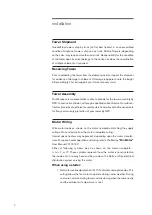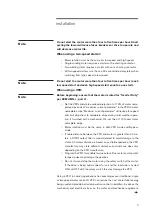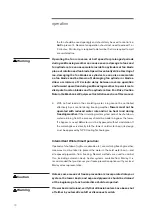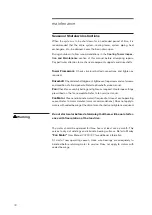
7
➠
If tower is equipped with a two-speed motor, check for proper rota-
tion at both speeds. Check also to see that starter is equipped with
a 20-second time delay which prevents direct switching from high
speed to low speed. This delay will allow the fan to slow down and
will prevent abnormal stress from being applied to the mechanical
equipment and the electrical circuit components.
4. Run the motor and observe the operation of the mechanical equipment. Opera-
tion should be stable, and there should be no evidence of oil leakage.
If the water supply system is not being operated—or if there is no
heat load on the system—motor amps read at this time may indicate
an apparent overload of as much as 10–20%. This is because of the
increased density of unheated air flowing through the fan. Deter-
mination of an accurate motor load should await the application
of the design heat load.
General:
The cold water temperature obtained from an operating cooling tower will
vary with the following influences:
1. Heat Load With the fan in full operation, if the heat load increases, the
cold water temperature will rise. If the heat load reduces, the cold water
temperature will reduce.
Note that the number of degrees (“range”) through which the tower cools
the water is established by the system heat load and the amount of water
being circulated, in accordance with the following formula:
The cooling tower establishes only the cold water temperature attainable
under any operating circumstance.
2. Air Wet-Bulb Temperature Cold water temperature will also vary with
the wet-bulb temperature of the air entering the louvered faces of the tower.
Reduced wet-bulb temperatures will result in colder water temperatures.
However, the cold water temperature will not vary to the same extent as
the wet-bulb. For example, an 11°C reduction in wet-bulb may result in
only an 8°C reduction in cold water temperature.
Caution
Note
Heat Load (kW)
Water Flow (m
3
/h) x 1.162
Range (°C) =
installation








































